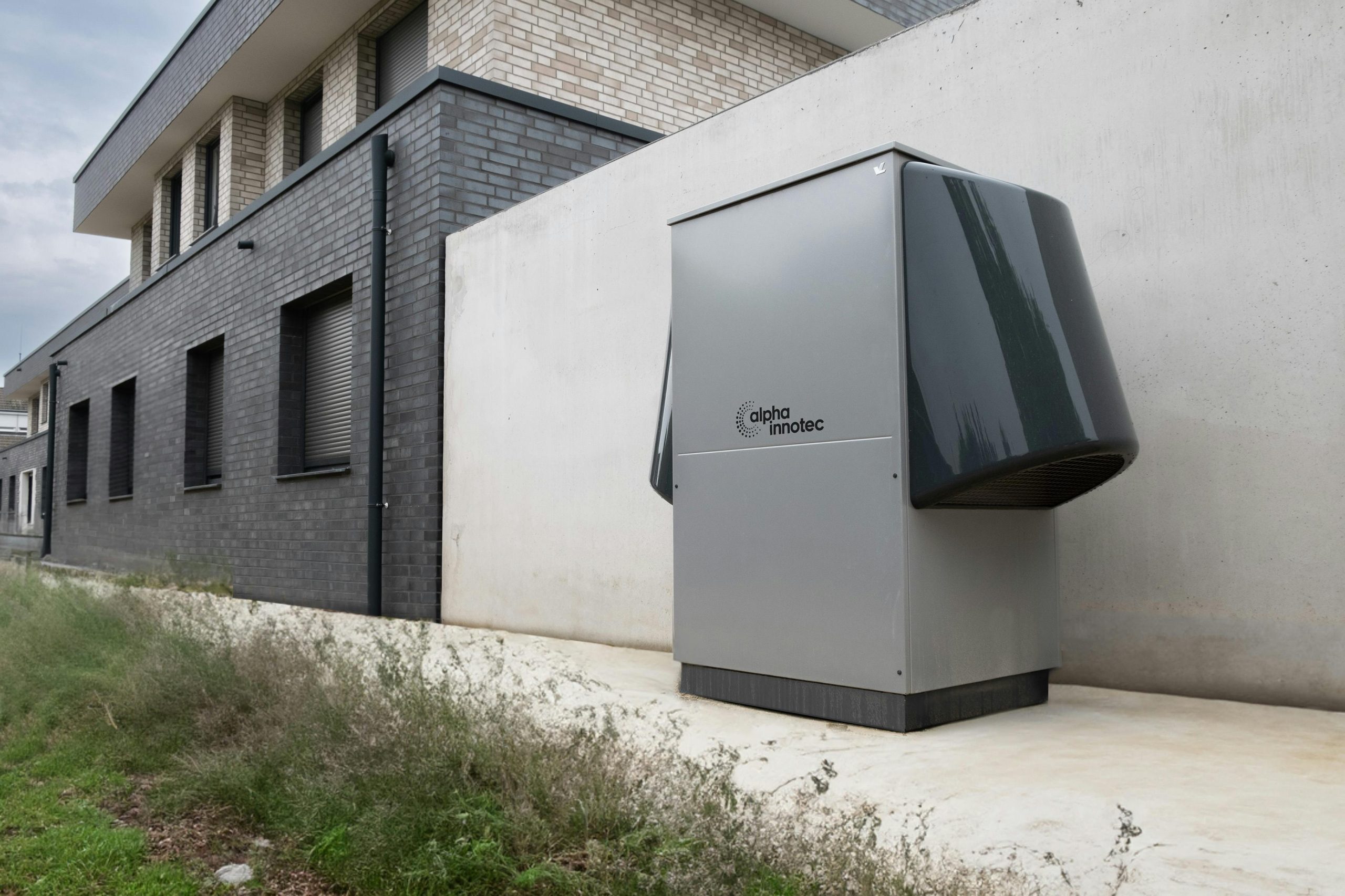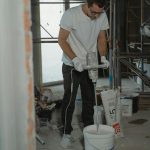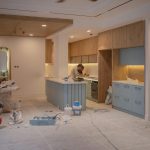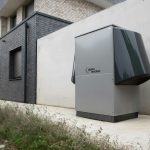Installing an air source heat pump cuts heating costs and lowers your carbon footprint by using clean, efficient technology. The process involves preparing your home, selecting the right system, and choosing between DIY or professional installation. Understanding costs, timelines, and necessary adjustments ensures a smooth transition to sustainable heating that fits your property’s needs.
Comprehensive Guide to Air Source Heat Pump Installation in the UK
Overview of Benefits and Importance of Professional Installation
Air source heat pumps are transforming the way UK homeowners heat their properties. These systems harness renewable energy from the air, delivering a sustainable and environmentally friendly alternative to traditional boilers. They significantly cut energy bills and carbon emissions, making them an appealing option for eco-conscious households.
Have you seen this : Restore your bathtub’s shine with expert reglazing services
Proper installation, carried out by qualified professionals, is vital for ensuring optimal system performance, safety, and compliance with UK regulations. Incorrect setups can lead to inefficiencies, higher energy costs, and potential damage to the system, underscoring the importance of choosing experienced installers.
How Government Support Facilitates Adoption
Financial incentives such as the UK government’s Boiler Upgrade Scheme—offering up to £7,500 in grants—substantially lower the upfront costs of fitting air source heat pumps. These grants encourage homeowners to switch from fossil fuel heating systems, aligning with the nation’s sustainability goals.
In parallel : What are the Future Implications for UK Politics Amidst Current Events?
Other regional schemes, like Home Energy Scotland grants and loans, as well as the NI Sustainable Energy Programme (NISEP), provide additional financial support. This helps offset installation expenses, which average around £14,000, depending on property size and complexity.
Installation Process Brief Breakdown
- Site assessment: Experts evaluate your property’s heat demand, inspecting insulation, radiators, and pipework compatibility—crucial steps to determine suitable system specifications.
- Pre-installation preparations: Upgrades to insulation, radiators, or hot water cylinders may be advised. Homes with microbore piping, common in 1970s properties, might require pipe replacement for efficiency.
- Physical setup: Outdoor units typically measure around 1m x 1.5m, installed on walls or ground mounts, while indoor components include a hot water cylinder or buffer tank. The process usually takes two to three days for standard systems.
- Connection and testing: Technicians connect electrical wiring, refrigerant lines, and controls, then test the system for optimal performance. Some temporary heating loss during setup is normal.
Why Choose a Qualified Installer
Selecting a certified installer, such as one registered with the Microgeneration Certification Scheme (MCS), guarantees adherence to safety and quality standards. They assess your property, provide a tailored solution, and ensure all work complies with building regulations.
WebPilot’s detailed Hailsham installation service exemplifies how professional providers streamline this process—from initial consultation to commissioning—ensuring reliable operation and longevity of your air source heat pumps.
Altogether, investing in professional installation, supported by government grants and expert advice, transforms the process into a manageable and rewarding transition to cleaner heating options.
Understanding the Air Source Heat Pump Installation Process
Initial Property Assessment and Heat Demand Calculation
A comprehensive air source heat pump setup process begins with an in-depth property assessment. Installers conduct a heat loss calculation to determine the energy your home requires for consistent warmth. This critical step influences the air source heat pump system design, ensuring accurate heat pump sizing and load calculations that meet specific household demands. Assessments identify whether existing radiators need upgrading, if larger units are necessary, or if underfloor heating is recommended to enhance energy efficiency after installation. Insulation advice also forms a part of this evaluation, as well-insulated homes benefit most from professional installation services through improved system performance and reduced heating costs. Installers analyse compliance with building codes and, if needed, provide guidance on permits, helping streamline your preparations and budget planning for system installation.
Site Preparation and Home Insulation Improvements
The next phase of the air source heat pump setup process involves preparing your property to maximise the system’s potential. Site preparation for installation includes allocating adequate space for both an outdoor unit—typically one metre by 1.5 metres—and an indoor hot water cylinder. Installation location considerations are crucial: outdoor units require clear airflow and minimal obstructions, while indoor components may require alterations to your hot water storage or radiators. Upgrading insulation is highly recommended, particularly for properties with older or solid walls; this directly impacts energy efficiency improvements after installation. Homeowners working with professional installation services benefit from detailed guidance on site preparation for installation, ensuring building compliance and optimal energy performance. For homes with microbore pipes, pipework modifications may be necessary to guarantee the effectiveness of the air source heat pump system design.
Selection of Suitable Heat Pump System and Placement
Choosing the right equipment is essential. The air source heat pump installation guide assists in selecting appropriate system capacity and suitable technology—often decided based on the home’s unique requirements uncovered during site assessment. Valid considerations include air source heat pump installation requirements in the UK, space requirements for outdoor units, and compatibility with your current heating system. The installer recommends the best air source heat pump setup process, whether it involves retrofitting into existing pipework, integrating with solar panels, or selecting from brands such as Mitsubishi, Daikin, Panasonic, or Vaillant. Professional installation services help homeowners evaluate cost factors for heat pump setup and clarify average installation expenses. The team will also confirm electrical requirements and upgrades needed to support efficient operation. The process ends with the unit’s precise placement, integration with existing systems, and system commissioning, setting the foundation for years of efficient, low-carbon home heating.
Step-by-Step Installation Procedure and Timeline
Outdoor Unit Placement and Mounting Options
Correct placement of the outdoor unit is central to the air source heat pump installation guide. Begin by assessing available space and proximity to the property—units commonly require at least one meter of clearance for efficient airflow and routine maintenance. Installers follow the air source heat pump setup process to determine whether ground or wall mounting best suits the property layout and site preparation for installation. Potential sites must be chosen to reduce noise transmission and comply with local regulations, including planning requirements and noise considerations during and post installation. Anti-vibration mounts and secure platforms are recommended installation tools to stabilize the unit, minimize operational noise, and avoid common installation mistakes such as obstruction or poor drainage. Outdoor components must also allow for unfettered refrigeration line access and electrical requirements and upgrades.
Indoor Component Installation: Hot Water Cylinders and Controls
After the outdoor unit is in place, focus shifts indoors. The air source heat pump installation requirements include proper sizing and location for hot water cylinders—usually set near existing plumbing to simplify integration with existing heating. The installation diagrams and schematics provided by manufacturers (including manuals for Mitsubishi air source heat pumps and Vaillant heat pump installation advice) detail radius constraints and clearance for serviceability. Installing controls, sensors, and thermostats is central to energy efficiency improvements after installation. For some properties, installation location considerations involve additional space for buffer tanks or expansion vessels. It’s essential to maintain system commissioning standards and follow recommended installation tools for any electronic component wiring during the air source heat pump setup process.
Plumbing, Electrical Connections, and System Testing
Plumbing links the outdoor and indoor system components. Pipes must be insulated to preserve efficiency, with plumbing and ductwork considerations with air source heat pumps factored into the installation diagram. Electrical connections require compliance with building codes—only trained and certified installers with air source heat pump installation qualifications should connect to the home’s consumer unit. Following all installation safety protocols, final checks include refrigerant handling during installation, proper evacuation, and leak testing. System commissioning and testing verify operational status, monitor electricity consumption, and validate the air source heat pump system design for performance against expected energy savings projections post-installation. Throughout, installers remain mindful of typical installation warranties and perform troubleshooting common installation issues before leaving the property, helping homeowners optimize system efficiency after installation and streamline home heating with heat pumps.
Costs, Permits, Regulations, and Cost Factors
Average Costs and Budget Planning
The air source heat pump installation cost varies significantly, but recent guidance places the typical outlay between £11,000 and £18,500 before any government incentives. Applying the Boiler Upgrade Scheme can reduce upfront expense by up to £7,500, and grants are available in all UK nations. When anticipating the average installation expenses, it is essential to distinguish between the base unit price and costs for labour, system commissioning, and home upgrades like insulation or radiator replacements. Robust budget planning for system installation includes accounting for initial surveying, consultation, and follow-up support. Financing options can spread payments over several years, offering flexibility to homeowners who prioritise energy efficiency improvements after installation without upfront financial strain.
Permits, Building Codes, and Environmental Regulations
Air source heat pump installation requirements demand compliance with both local and national building codes. In most UK regions, installing air source heat pumps does not require planning permission unless the property is listed, in a conservation area, or regulations are regionally stricter. Installers must adhere to environmental regulations affecting installation, particularly concerning refrigerant handling during installation and disposal of existing heating units. Qualified professionals certified to meet regulatory certifications required for installers handle these steps, ensuring correct installation safety protocols are followed and that the setup is eligible for government incentives and rebates for installation. Proper documentation and a valid Energy Performance Certificate often form part of the permits and regulations involved.
Key Cost Factors: Property Size, System Complexity, and Site Conditions
Several determinants shape the cost factors for heat pump setup. Property size directly affects the air source heat pump system design and the power of the unit required, making homes with more rooms or larger living spaces more costly to upgrade. The complexity of the system (such as whether integrating heat pumps with existing heating or needing new ductwork or underfloor heating) also impacts cost. Unique site preparation for installation, like modifying microbore pipes or addressing access limitations, can increase expenses. Installation location considerations, such as available space for outdoor units and sufficient room for hot water cylinders, should be evaluated early. If additional electrical upgrades or insulation work are needed, those costs add to the overall budget.
By reviewing all elements—permitting, budget planning, professional installation services, and key factors—homeowners can confidently prioritise a streamlined home heating upgrade in line with environmental benefits of air source heat pumps.
Choosing a Qualified Installer and Local Installation Services
How to Find Certified and Trusted Installers
To ensure reliable air source heat pump installation, always prioritise professional installation services with proven qualifications. Look for installers who are MCS-certified (Microgeneration Certification Scheme), as this accreditation guarantees both technical proficiency and compliance with the latest UK regulations. Checking for up-to-date training and certification courses—such as official air source heat pump installation courses—will help confirm the installer’s expertise. When exploring local options, searching for “heat pump installation near me” can reveal nearby specialists, but only proceed if they offer transparent credentials, insurance, and references from previous installations. Reputable companies usually provide detailed installation diagrams and schematics to clarify their air source heat pump setup process before work begins. Assessing customer support, warranty terms, and ongoing maintenance contracts is equally critical for peace of mind after installation.
Comparing Quotes and Service Packages
Gather at least three quotes from different professional installation services to achieve a clear understanding of price and inclusions. Each quote should outline the air source heat pump installation cost, any likely average installation expenses, and detail cost factors for heat pump setup such as equipment, labour, permits, and electrical upgrades. Clarify whether the quote covers all air source heat pump installation requirements—especially site preparation, compliance with building codes, and permits and regulations involved. Avoid common installation mistakes by examining what’s excluded in each service package; this helps with budget planning for system installation and ensures no surprise charges later. Trusted firms distinguish themselves by offering clear guidance, including installation diagrams and manuals for models like Mitsubishi, Daikin, Panasonic, and Vaillant, plus robust post-installation customer support.
Regional Availability and Lead Times in the UK
Availability of professional installation services depends on your location and current installer workloads. Regional installation services in areas such as Norfolk, Somerset, and Hailsham demonstrate variation in both procedure and lead times. With high national demand, expect regional wait times for an air source heat pump installation to range from several weeks to multiple months. Lead times can stretch during winter or promotional periods tied to government incentives and rebates for installation. Initiating your installer search early and confirming a booking as soon as you identify a qualified provider is strongly advised. Always confirm that your installer adheres to all regional permits and regulations involved—failure to meet such requirements can result in delays or additional costs. Reliable, certified professionals will manage system commissioning, compliance procedures, and streamline your home heating upgrade from consultation to completed installation.
Post-Installation Maintenance and System Optimization
Regular Maintenance and Troubleshooting Common Issues
Proper upkeep following air source heat pump installation ensures stable, energy-efficient performance over the long term. Routine maintenance, as recommended in every air source heat pump installation guide, involves simple yet essential steps: check filters and vents for dust build-up, keep outdoor units clear from debris, and inspect for visible damage or leaks. These maintenance tips post-installation apply to most models, including specifics for systems outlined in manuals for Mitsubishi air source heat pumps, Daikin units, and Panasonic references. For troubleshooting, most air source heat pump installation guides suggest starting with system resets, evaluating thermostat settings, or confirming electrical connections. If you encounter persistent operational faults, it’s advised to seek professional installation services to address refrigerant handling or more complex mechanical issues.
Monitoring Performance and Energy Savings
Consistent monitoring enables you to assess system efficiency and the true impact on home heating costs. After air source heat pump installation is complete, performance should be tracked using integrated controls or third-party smart home solutions. Data such as runtime, temperature consistency, and electricity consumption should be reviewed monthly. Notable drops in output or unexplained spikes in usage could signal issues requiring prompt attention. Maintenance tips post-installation often recommend a seasonal check-up by a certified professional, particularly before winter, to recalibrate settings and confirm efficiency. Reviewing historical data helps you identify patterns and schedule service before problems affect comfort or undermine energy efficiency improvements after installation.
Enhancing Efficiency with Smart Controls and Insulation
To maximize energy efficiency improvements after installation, invest in additional insulation and smart controls. Proper insulation minimizes heat loss, allowing systems installed after following the air source heat pump installation guide to maintain temperature with less energy expenditure. Common upgrades, including loft or wall insulation, exponentially improve the benefits of heat pump technology. Meanwhile, integrating smart thermostats—compatible with most modern heat pump systems—permits real-time adjustments and responsive scheduling, reducing unnecessary runtime and further enhancing savings. Professional installation services often offer guidance in configuring advanced thermostat features during the air source heat pump setup process, ensuring optimal synergy between your insulation improvements and system settings.
By following these outlined maintenance tips post-installation and prioritizing energy efficiency improvements after installation, you protect your investment and secure lower operating costs for years to come. Regular care and technical updates not only support manufacturer warranties but also contribute directly to comfort and reduced carbon emissions.
Air Source Heat Pump Installation: Step-by-Step Guide and Essential Considerations
Precision answer (SQuAD method):
Proper air source heat pump installation demands compliance with building codes, careful site preparation, consideration of system design, selection of a qualified installer, and a clear understanding of costs and requirements. Successful setup requires consultation, assessment of property needs, installation by certified professionals, and post-installation checks to ensure efficiency and safety.
Step-By-Step Air Source Heat Pump Setup Process
The typical air source heat pump installation guide begins with an expert consultation. During this phase, a heat pump professional reviews your home’s layout, insulation, and heating needs to tailor solutions to your requirements. The installer will provide an itemised quote outlining the air source heat pump installation cost, highlighting government incentives such as grants or rebates that may ease your investment.
Next, the air source heat pump setup process continues with a site assessment. This involves confirming the best location for the outdoor unit, factoring in local regulations and site preparation for installation. Outdoor space must accommodate the unit’s size, address noise considerations, and meet air flow requirements set by manufacturers like Mitsubishi, Daikin, Panasonic, or Vaillant, as detailed in their installation manuals.
Professional Installation Services and Compliance
Choosing a qualified installer is critical to streamline your project. Licensed installers carry certifications required for legal air source heat pump installation in the UK and ensure compliance with building codes. They are well-versed in air source heat pump installation requirements, such as updating electrical systems, managing refrigerant safely, and integrating new equipment with existing heating systems where feasible.
Understanding permits and regulations involved is necessary. In many regions, especially the UK, homeowners may not need planning permission, except in special cases such as listed buildings or conservation areas. Installers ensure that all local codes are followed, and you receive the installation certificate upon completion.
Budget Planning and Cost Factors
Average installation expenses typically range between £11,000 and £18,500 for residential air source heat pump system design and commissioning. Cost factors for heat pump setup depend on property size, energy performance, equipment brand, installation complexity, and whether radiators or pipes need upgrading. Budget planning for system installation should include possible upgrades to insulation, new buffer tanks, or hot water cylinders for optimal efficiency.
Evaluating financing options for heat pump installation, such as government payments, zero-interest loans, or payment plans, helps manage upfront costs. Grants can significantly reduce your out-of-pocket expense, so investigating these should be the first step before proceeding.
Site Preparation and Installation Day
Preparing your property is key. Site preparation for installation may involve removing an existing boiler, adjusting or replacing radiators, and ensuring sufficient indoor space for new components. Installation location considerations focus on unit placement for efficiency, ease of maintenance, and minimizing sound filtration into living areas.
Professional installation services generally allocate three to five days to complete the process. On installation day, qualified engineers undertake tasks such as plumbing, electrical work, and system commissioning, always following recommended safety protocols and using the correct tools for installation. After setup, installers conduct commissioning and rigorous testing to guarantee system reliability and user safety.
Post-Installation: Maintenance and Performance Monitoring
Maintenance tips post-installation include scheduling yearly servicing, monitoring system performance in different seasons, and following seasonal maintenance schedules. Checking radiators, inspecting connections, and updating smart thermostat settings can extend your air source heat pump lifespan and ensure long-term benefits. Integration with solar energy systems and tracking electricity consumption contributes to further energy efficiency improvements after installation.
Experienced installers usually supply comprehensive air source heat pump installation diagrams and schematics in the user manuals, covering troubleshooting common installation issues and operational concerns. This information is particularly useful for resolving minor system alarms or planning future maintenance schedules.
By taking a structured approach as outlined in this air source heat pump installation guide, homeowners ensure optimal performance, regulatory compliance, and meaningful energy cost savings with their investment.











